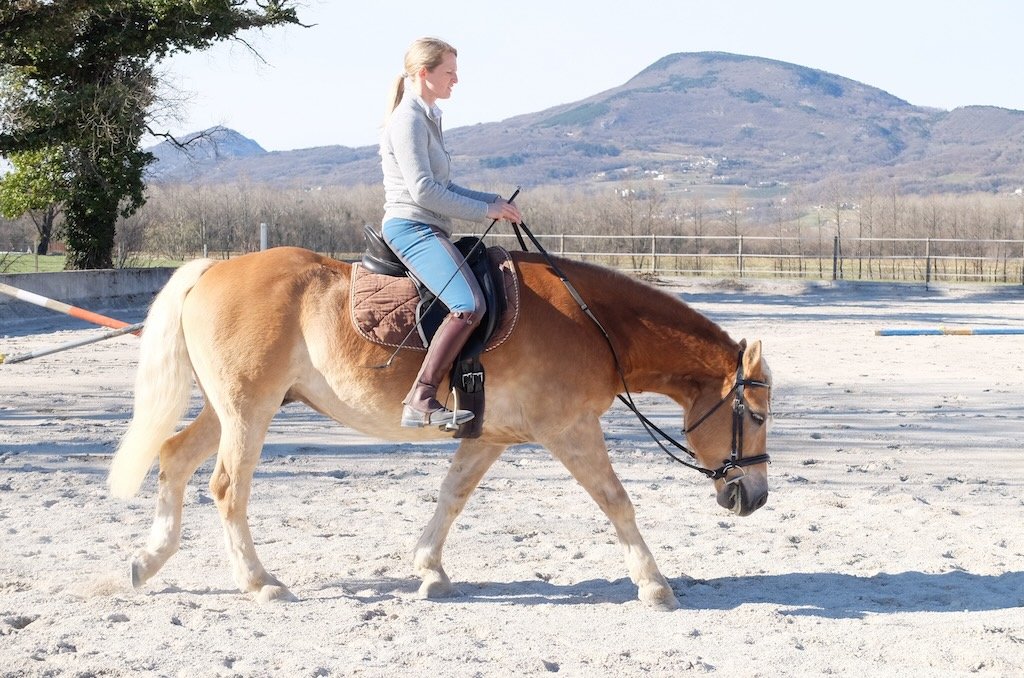Reading the head position
How the horse chooses to carry his head can tell us a lot about what is going on in his body. Here’s a few tips on reading head position.
A horse with his head too low is not engaging his thoracic sling and is overburdening the front legs.
While I often say we focus too much on head position when riding our horses, that's not to say we should ignore it. In fact, if we know how to listen to it, the head position can tell us a lot about what is going on in the rest of the body. The way the horse chooses to carry his head and neck gives us information on how to adjust our work to support him in the areas where he's weak. So, let's look at some common issues with head position and what they are usually telling us.
One of the most common issues with head position is the horse carrying his head too high. This is something riders often try to remedy by pulling on the reins to »make« the horse go into a more desired, lower frame. A horse with his head high is tensed through his back. He is actively contracting his back muscles, which makes his spine dip down into a hollow posture. This will prevent the pelvis from being able to come more underneath the horse. Thus, the hind legs won't be able to activate. Often this posture is associated with back pain and stiffness, especially in the lumbar area. Very often there is also a restriction at the base of the neck and weakness of the thoracic spine. So, what to do about it? Make sure the horse's back is pain free, resolve the restriction at the base of the neck and start working on making the thoracic sling stronger.
Another common thing that I see is horses moving with their head too low. Some will have their nose almost to the ground. While this is less damaging than the head high posture, it will still cause damage in the long run. Many riders think that this kind of posture is good, but it's only good as an intermediate step, never as an end goal. The horse with their head too low is hanging in between his shoulder blades. His thoracic sling is nit activated and his body is pushed downward. What this does is it prevents the spine from being in a neutral position and it overburdens the front limbs. So, what to do about it? First, make sure the horse's hooves are well balanced. Some horses struggle to use their thoracic sling if their front feet are not functioning well. Then you will need to release the tension around the shoulders and at the base of the neck and mobilize this area. Slowly, you will need to teach your horse how to lift through the base of the neck. This is easier done with groundwork to start with.
Another variation is the horse that carries his head crooked, twisting his head. One rein might feel »empty« and the other one might feel like the horse is leaning on it. This becomes especially apparent in turns and it can be accompanied by head tossing or inconsistency in how high the horse carries his head. This kind of behaviour very often indicates a poll, TMJ or dental issue. Or all three. Make sure to call the dentist and then have the bodyworker come out to release tension around the TMJ and poll. Check the fit of your bridle (make sure buckles don't go anywhere near the TMJ) and do some neck mobilizing exercises to show your horse he can move pain free.
This is a very basic overview and it obviously doesn't include all possible issues or causes. Different horses will react to pain or a lack of balance in different ways, so it's important to treat each case as an individual, but hopefully this gives you an idea of where to start.
